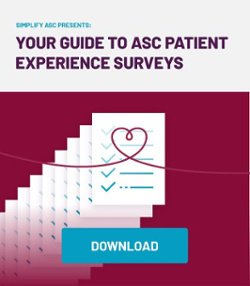
- Practice Management Systems, ASC Technology, ASC Operations
- BY: David Howerton
- Feb 19, 2019
It is estimated that ASCs spend up to $7 on materials to build a paper chart. Multiply that by an annual case count and it adds up - fast. By how much? Based on average annual case volume reported from Medicare-certified ASCs, the annual cost hovers around $30,000. Of course, case volume may be higher for non-Medicare ASCs. Add time and labor for office staff to assemble, retrieve, disassemble and reassemble paper charts, and the total cost begins to contribute significantly to the $1.5 million in annual operating expenses for the average ASC.
To bring down this per chart figure, ASCs increasingly turn to medical charting systems to not only save money, but to harness the data these Electronic Medical Record (EMR) charting systems generate to improve care quality, boost productivity and gain greater insight into their business and clinical operations. Here’s how.
Immediate Benefits
Assuming you’ve made the leap and begun digitizing charts, the most immediate benefits are the savings from not having to pay for medical records storage and shredding. Just as relevant are the time savings — and in an ASC, time is everything. A typical ASC spends 5 minutes building a patient chart. That’s an entire business day per month for every 100 cases. Finally, there’s the benefit of never losing, and always being able to access, a digital chart.
Reporting
Running a report for a board meeting or developing a weekly look at key performance benchmarks shouldn’t make you want to pull your hair out. Combining multiple software apps to develop reports, and assembling, for example, quality reporting by hand is never easy. Digital patient charting unlocks data for regular reports as well as for highly specialized updates and sophisticated analytics reporting without the hassle. Prompts within the medical charting system can help prevent missing and/or incorrect data entry, and alerts users to errors and other issues that require attention.
Patient Experience
 Having a surgical procedure is stressful. Being asked the same information repeatedly while you prepare for the surgery is annoying. With the move to digital, ASC staff can note allergies and other pivotal information once during pre-op, then effortlessly propagate it throughout the chart. In addition to auto-filling information, some patient charts allow you to include a photo of the patient directly into their file. Instead of calling them by name in the waiting room, staff can approach the patient and welcome them personally. It’s more discreet and starts the patient’s journey off on the right foot.
Having a surgical procedure is stressful. Being asked the same information repeatedly while you prepare for the surgery is annoying. With the move to digital, ASC staff can note allergies and other pivotal information once during pre-op, then effortlessly propagate it throughout the chart. In addition to auto-filling information, some patient charts allow you to include a photo of the patient directly into their file. Instead of calling them by name in the waiting room, staff can approach the patient and welcome them personally. It’s more discreet and starts the patient’s journey off on the right foot.
Beat the Competition
If you’re an independent ASC, the competition is heating up. The ASC market is growing at a fast clip, while inpatient surgeries are declining. Hospitals and health systems, as well as insurance companies and private equity firms, are showing greater interest in acquiring ASCs, either for outright purchase or to forge joint ventures. In some regions, this will lead to an increasingly consolidated ASC market.
Moving to a digital patient chart gives the independent ASC a competitive edge. By providing everything from automated patient registration to flagging missed physician signatures, and automating data entry that staff had to tediously enter and re-enter using paper forms, digital charts free staff up to focus on ways to improve and strengthen operations — not just get through the day.
Digital Natives, Digital Immigrants
As the new digital world began to take shape in the early 2000s, Marc Prensky coined the terms “digital natives, digital immigrants”. He largely refers to those who were born into an already existing digital world — the natives — and those who grew up in a pre-Internet era. Over 30% of physicians are older than 60 years, and began practicing medicine well before computers elbowed their way into healthcare. The story is the same for perioperative nurses: 66 percent are over 50 years old, and 20 percent are over 60.
While most are conversant in digital “language,” not everyone is fluent. Any digital shift, while certainly more cost-effective and efficient, takes skilled preparation. The chart you choose should make the transition as smooth as possible for the end users. Charting software should duplicate the look and flow of the paper forms, while also offering the ease and flexibility of being able to function from a laptop or tablet. We’ve yet to meet a physician or nurse who wants to be tethered to a bulky computer that gets in the way of patient communication!
The Simplify ASC management platform converts your paper forms into a digital patient chart. Chart in a way that fits your workflow, tracks progress, and eliminates errors. There’s more, and it’s all backed by 24/7 you-centered support that understands your urgency and is ready to help.
Now you can love the way you work.

